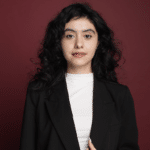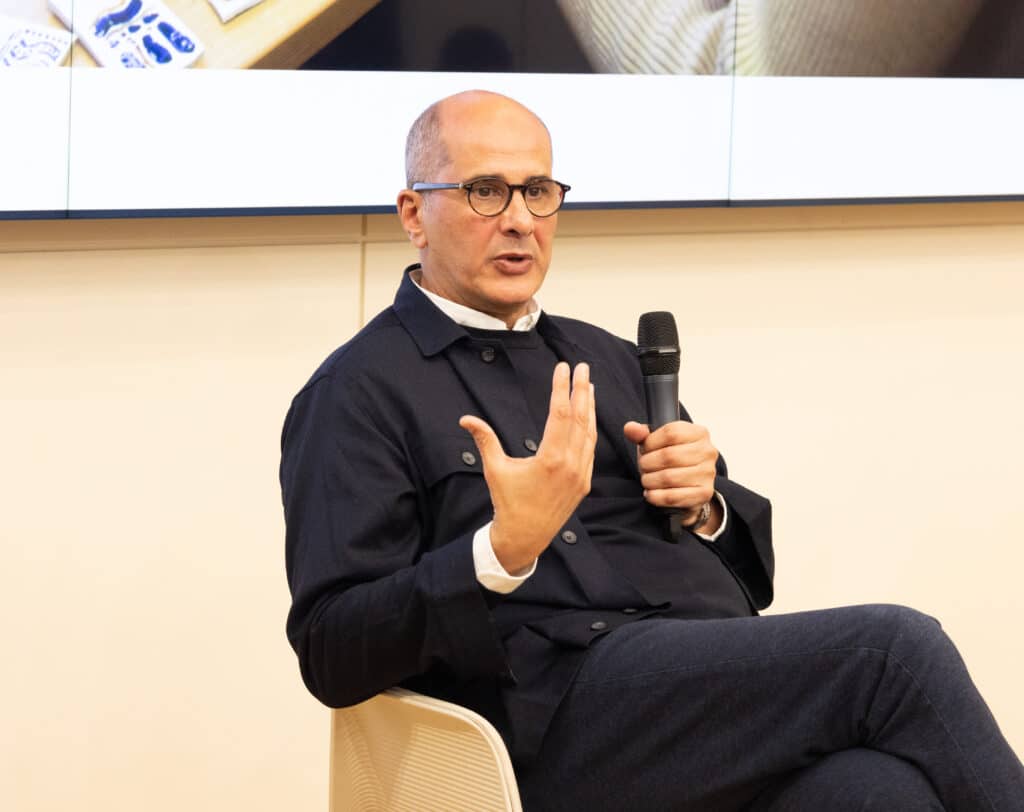
In an era of constant innovation, what is the place of tradition? On February 4, Dr. Khaled Azzam, a renowned architect and Director of the King’s Foundation School of Traditional Arts, tackled this question in his lecture at the Republican Children’s Library in Tashkent. Kursiv Uzbekistan had the opportunity to discuss his views on how traditional arts can remain relevant today.
Tradition is a living force, not a historical relic
Dr. Azzam’s approach to tradition challenges the common perception of cultural preservation as a static process. He argues that tradition is not a fixed entity but one that must evolve to meet the demands of contemporary society.
«Once tradition takes on a form and that form becomes the historical form, it starts dying. When tradition is principal and keeps on creating, regenerating, and evolving as a living tradition, that’s when it stays alive.»
For the expert, the real value of tradition lies in its ability to innovate while retaining its foundational roots. He stresses that tradition should not be preserved merely for nostalgia’s sake but as a living, breathing force that shapes societies.
«We are very possessive of tradition, thinking that it can only exist in its purest form, but tradition is not static. It has to keep evolving, regenerating, and responding to the challenges of its time.»
This perspective encourages a broader conversation about how tradition can retain its core values while making space for innovation and creative reinterpretation.
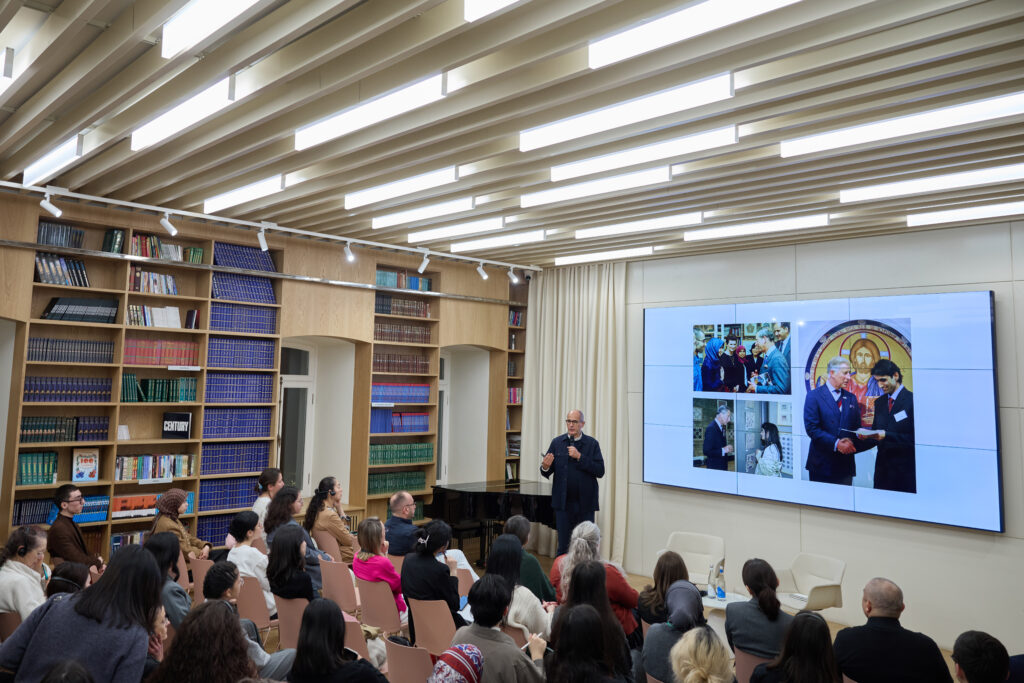
The art of speaking without words
A focal point of Dr. Azzam’s lecture was the concept of a visual language in traditional arts. He discussed how, in modern society, we have largely lost the ability to understand the deeper meanings embedded in artistic and architectural patterns, which once conveyed significant cultural messages.
«Just as much as there is another language, there is a visual language. We have lost the ability to read the visual language. You simply look at the surface and don’t understand the messages beneath.»
According to the architect these visual languages—found in patterns, designs, and symbols—act as a form of communication, deeply connected to cultural, scientific, and poetic traditions. He believes that by relearning to read this visual language, individuals can gain a richer understanding of the historical context and values embedded in these artworks.
«Our ancestors spoke to us through their art, through their designs, through the way they structured their spaces and buildings. These patterns are not just decorative, they’re full of meaning. If we understand them, we can learn so much about the science, the philosophy, and the culture of the time.»
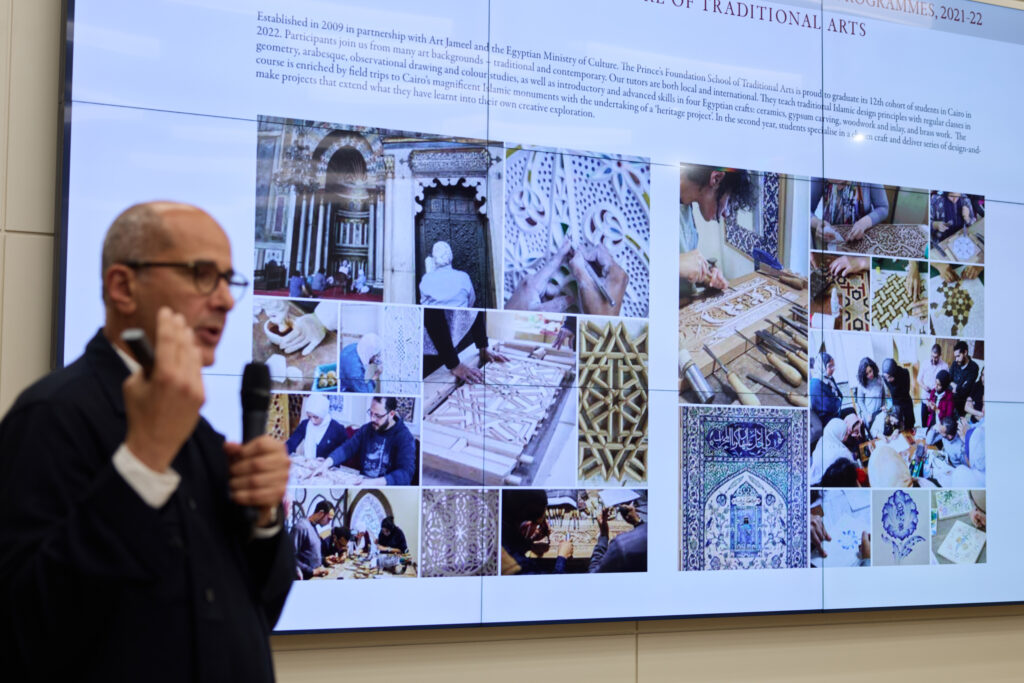
Dr. Azzam suggests that rediscovering this visual language is a powerful tool for bridging the past and the present, allowing societies to better understand their heritage while integrating it into contemporary life.
Human touch behind the machine
As technology becomes an integral part of modern art and design, the expert addressed the role of digital tools like computers and 3D printing. While recognizing their utility, he emphasized that these technologies should be seen as tools—assistants, not creators.
«I don’t think so at all. I think we have to make clear what is truly a computer: it is a tool because I use it to draw. It draws a bit faster than my hand, it does a bit more complex things, but I am controlling the computer. It’s coming through me now. That is a tool. It’s not a creative instrument. It’s only as creative as what you give it.»
For Dr. Azzam, the real creativity lies in the connection between the artist’s mind, heart, and hand, which technology cannot replicate. He explained that this instinctive creative flow is disrupted when using digital tools:
«We’re not against using computers. We all use computers. But AI is a different matter. AI is a bit dangerous because we don’t understand what the source of it is. We all think AI is this divine wisdom. But I know AI is somebody feeding information into it and that information is being edited and monitored. So be very careful what the hell it is, but believe in yourself.»
He further explained that while technology can speed up the process, the true magic of creation happens when the artist’s hand works with their mind and heart:
«Take that route to your origin and understand where that comes through. If it comes through a computer, it comes through your hand. But there’s a magic that happens when you work with your hands, that connection between the mind, the heart, and the hand. It’s an instinctive flow that cannot happen in the computer.»
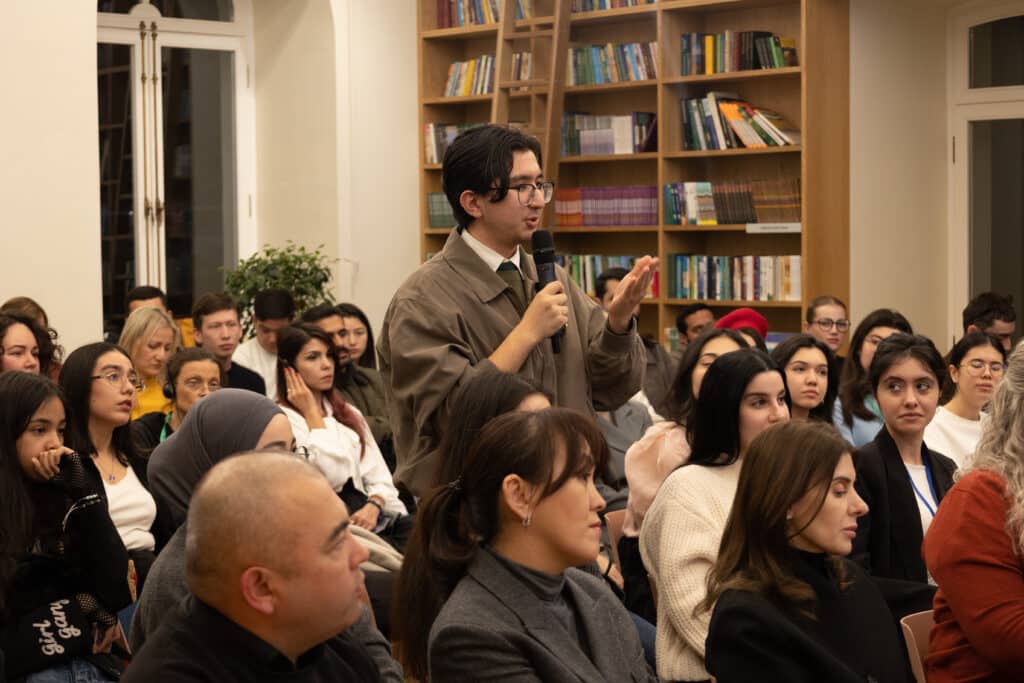
He advocates for a balanced approach, where technology serves to complement traditional techniques rather than supplant them, ensuring that the human touch remains central in creative processes.
Breathing new life into tradition
Dr. Azzam also explored the notion of repetition within traditional craftsmanship. While recognising the importance of repetition in mastering a craft, he cautioned against seeing it as an end in itself. Instead, repetition should be viewed as a means to an end, enabling artisans to understand the core principles of their craft and innovate from there.
«Tradition should not be about copying; it should be about regeneration.»
The architect shared a heart-wrenching story from his experience in Egypt, where he and his team worked with a group of traditional artisans. One craftsman, after years of repeating the same patterns, finally designed something new.
«For the first time in my life, in the last 25 years, I designed something,» the craftsman said.
Dr. Azzam expressed how deeply this affected him: «It broke my heart because he realized he wasted his life. What we need is to encourage a generation of artists and craftsmen who don’t just copy what was done before, but who understand the origin of their traditions and create something new from that understanding.»
He highlighted that the essence of craftsmanship lies in breathing new life into past forms, not simply repeating them.
Standing strong in your own identity
Dr. Azzam’s visit to Uzbekistan underscored the need for young people to engage with their cultural heritage while embracing modern influences. He urged the youth of Uzbekistan to view their cultural roots as the foundation for future innovation.
«What’s important is to speak to the world from your own identity, not what the world wants you to be. As every flower that blooms is different. Every flower is beautiful, but every flower is contemporary because it emerges today, coming from the same origin as humanity, as everything. We are like snowflakes. We are all shaped differently, but we are all contemporary because we all fall to the ground at the same moment. That’s the strength of identity. Don’t lose that, because what you have in this country is truly remarkable.»
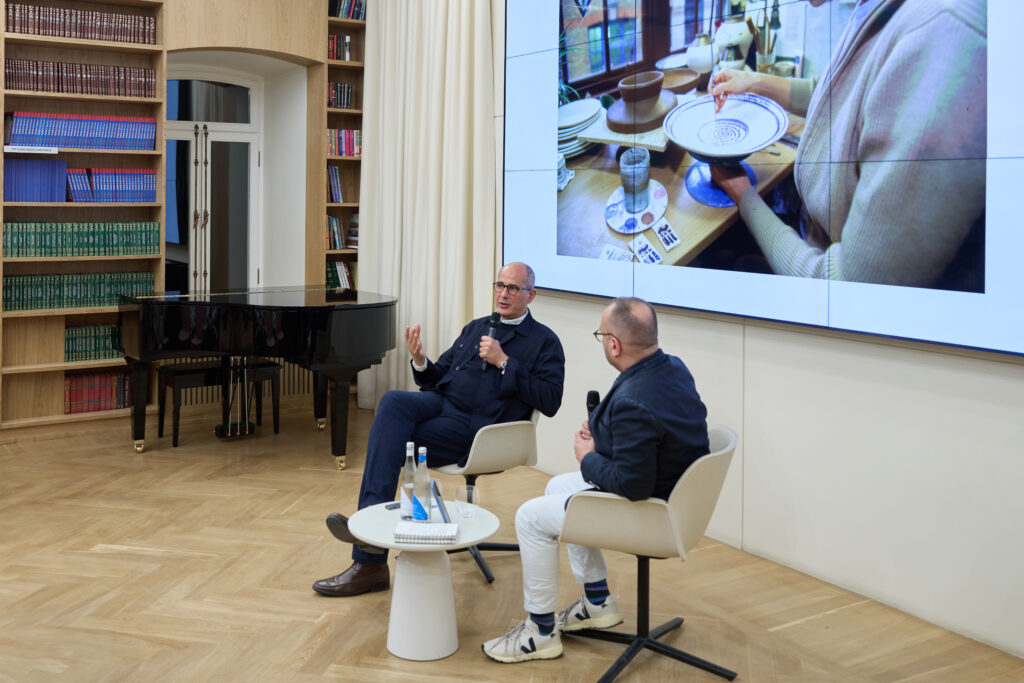
Dr. Azzam’s message was a call for individuals, especially young people, to assert their cultural identity with confidence and participate in the global dialogue from a position of authenticity. He emphasised that a culture’s true strength lies in its ability to express its values and wisdom in contemporary terms.
The architect concluded by reiterating the importance of viewing tradition as a continuous and evolving dialogue, rather than as a static, historical artifact.
«What your ancestors left you is wisdom, and what you leave for your children is the same wisdom.»
